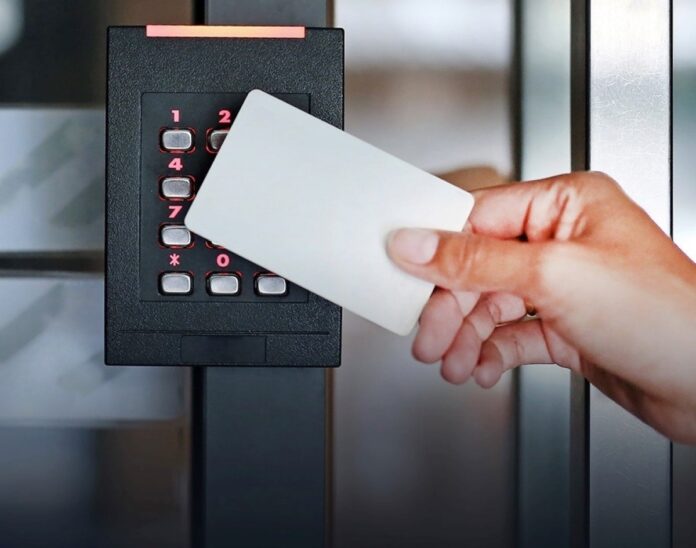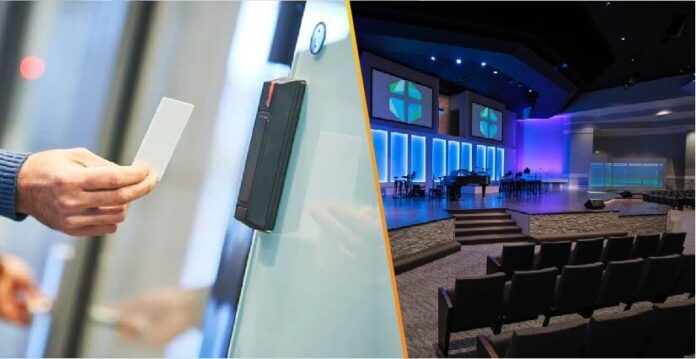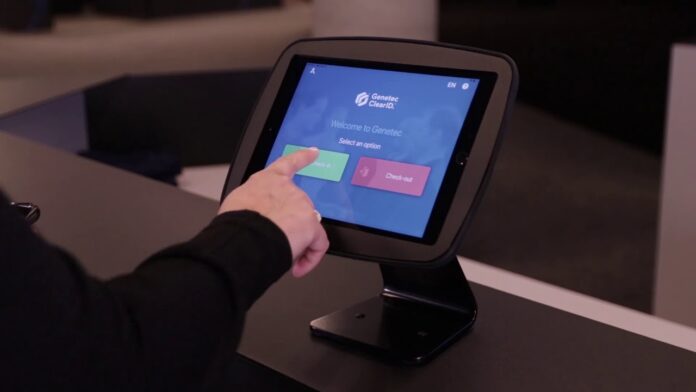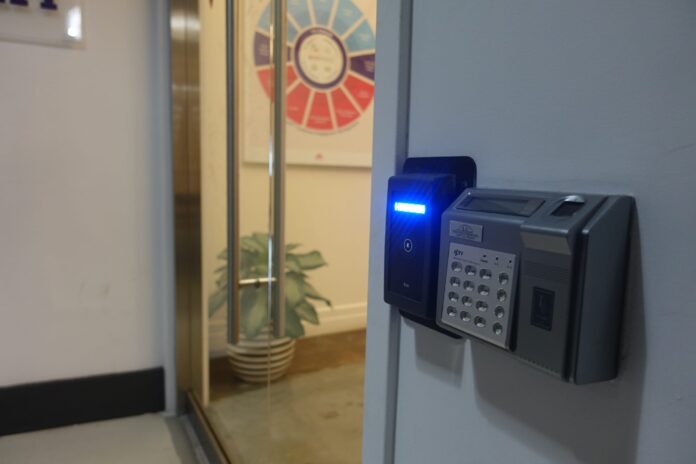The Changing Landscape of Church Security With rising global concerns surrounding safety, churches can no longer afford to adopt a laid-back approach to security. Gone are the days when the sanctity of religious spaces was universally respected. In our fast-evolving world, where unfortunate incidents at places of worship have become a somber reality, it is imperative for churches to stay ahead and ensure the safety of their congregation. Access control emerges as a beacon of hope, offering a blend of hospitality and vigilance.
In an era where safety and security are paramount concerns, churches, like many other institutions, must prioritize the protection of their congregations, staff, and assets. Access control for churches has emerged as a crucial element in safeguarding these sacred spaces. By implementing effective access control measures, churches can strike a balance between welcoming all worshippers and ensuring a secure environment. In this article, we will delve into the importance of access control for churches, explore various methods and technologies, and offer practical tips for implementation.
The Significance of Access Control for Churches
- Safety of Congregants and Staff: Access control systems enable churches to control and monitor who enters their premises, thereby reducing the risk of unauthorized individuals causing harm or disruptions. This is especially vital during large gatherings and events.
- Asset Protection: Churches often house valuable religious artifacts, equipment, and donations. Access control helps protect these assets from theft, vandalism, or unauthorized access.
- Compliance with Regulations: Many jurisdictions require places of worship to meet certain security standards. Implementing access control systems can help churches comply with these regulations and avoid potential legal issues.
Methods and Technologies for Access Control

- Keyless Entry Systems: Keyless entry systems, such as keypad locks or smart locks, eliminate the need for physical keys and can be easily managed and monitored. These systems can provide unique access codes to staff members and authorized individuals.
- Card Access Systems: Card access systems use proximity cards or key fobs to grant entry. They are versatile and can be quickly deactivated or reactivated, making them ideal for managing access for various groups within the church.
- Biometric Access Control: Biometric systems that use fingerprints, retinal scans, or facial recognition offer the highest level of security and accuracy. However, they can be more expensive to implement.
- Video Surveillance: Combining access control with video surveillance can provide a comprehensive security solution. Surveillance cameras can help monitor entrances and exits, enhancing the overall security posture.
Practical Implementation Tips
- Assess Security Needs: Start by conducting a security assessment to identify vulnerabilities and determine the specific access control requirements of your church.
- Create Access Policies: Develop clear access policies and procedures that outline who is authorized to enter specific areas, when, and under what circumstances.
- Train Staff and Volunteers: Ensure that all staff members and volunteers are trained on access control systems and security protocols. Regular drills and exercises can help reinforce these practices.
- Monitor and Audit: Regularly review access logs and security camera footage to identify any irregularities or potential security breaches. Conduct periodic security audits to assess the effectiveness of your access control measures.
Conclusion

Access control for churches is not just a security measure; it’s a commitment to the safety and well-being of the congregation and the preservation of sacred spaces. By implementing the right access control methods and technologies, churches can strike a balance between welcoming all worshippers and ensuring a secure environment. Remember, security is not solely about restricting access but about creating a safe and inclusive environment where all can worship in peace.
The Power of Collective Vigilance
Beyond the tangible measures of security lies the strength of a community united in purpose and vigilance. As churches continue to adapt and respond to emerging security challenges, the involvement of each member becomes pivotal.
Community Awareness Programs: Hosting regular seminars and workshops on security awareness can educate the congregation about the nuances of the evolving threats and their role in countering them. Knowledge is, indeed, the first line of defense.
Fostering a Culture of Reporting: Encourage congregants to promptly report any suspicious activities or individuals. By fostering a culture where members feel comfortable and responsible for sharing concerns, churches can nip potential threats in the bud.
Leveraging Technology for Communication: In an age of instant communication, churches can utilize messaging apps or dedicated communication platforms to quickly disseminate vital security information or alerts among members.
Strengthening Community Ties: By forging stronger ties within the community, churches not only enrich the spiritual experience but also create a network of individuals who look out for one another. Community events, group activities, and regular interactions can bolster this sense of unity.
Balancing Open Doors with Secure Boundaries

The essence of any religious institution lies in its open invitation to worshippers from all walks of life. However, the challenge is to maintain this spirit of openness while ensuring that security threats are kept at bay.
Visitor Management Systems: Modern churches can adopt visitor management systems, which involve signing in guests or visitors. This not only keeps a record of individuals visiting the premises but also can be integrated with background checks if deemed necessary.
Temporary Access: For events or special occasions where a large influx of people is expected, temporary access cards or codes can be provided. This ensures that even non-regular attendees can worship without hindrance while maintaining a security protocol.
Involving the Congregation
Safety is a collective responsibility. The more the church congregation is involved and informed, the more effective security measures will be.
Feedback Loop: Encourage members of the congregation to provide feedback on security measures. They might provide insights or perspectives that weren’t previously considered.
Community Watch Programs: Establishing community watch programs within the church can be an effective way of ensuring safety. This involves training volunteers to be the eyes and ears during services and events, subtly monitoring for any unusual activities.
The Role of Technology in Enhancing Access Control

In this digital age, churches can harness the power of technology to bolster their access control systems.
Mobile Apps: There are now mobile applications that can control and monitor access to church facilities remotely. These apps can also send real-time notifications in case of a breach.
Integration with Emergency Services: Modern access control systems can be integrated with local police or emergency services. In the event of a security breach, the appropriate authorities can be notified immediately.
Final Thoughts: Embracing the Future with Faith and Foresight
While it’s crucial to address the security challenges of today, it’s equally important for churches to look ahead. As technology evolves and societal dynamics shift, the concept of access control will undergo changes. Churches must remain proactive, ensuring that their sanctity and the safety of their congregation are always upheld. By staying updated, embracing innovations, and fostering a community of vigilance, churches can navigate these changes. Embracing access control with a vision for the future will enable churches to offer a haven where faith flourishes, undeterred by the uncertainties of the external world.










